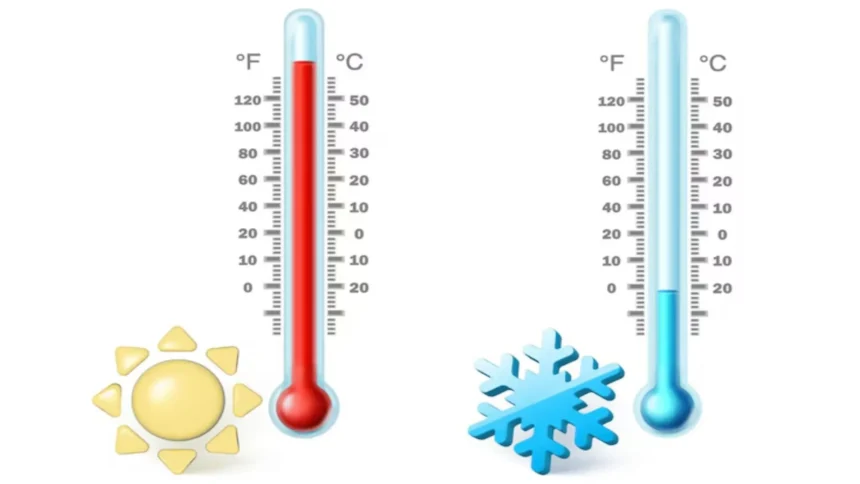Maintaining the suitable temperature for heating and cooling is critical for comfort, health, and power efficiency in houses and workplaces. Understanding the top-rated temperatures can help reduce energy bills, reduce environmental impact, and create a pleasing living and operating surroundings.
This article explores the ideal temperatures for heating and cooling, factors that influence these settings, and tips for maintaining optimal indoor climate control.
Understanding Ideal Temperatures
The perfect temperature for heating and cooling can range primarily based on several factors, such as the season, geographic location, non-public alternatives, and the particular needs of different rooms. However, a few trendy guidelines can help establish a baseline for consolation and performance.
Heating: Ideal Winter Temperature
During the iciness months, the intention is to preserve a heat and snug indoor environment without losing electricity. The U.S. Department of Energy recommends placing your thermostat to sixty eight°F (20°C) whilst you are conscious and at domestic. Lowering the temperature by 7-10°F for eight hours a day can keep up to 10% a year on heating and cooling charges. This may be achieved during drowsing hours or when the house is empty.
Cooling: Ideal Summer Temperature
In the summer season, retaining cool whilst coping with electricity consumption is the priority. The U.S. Department of Energy indicates placing your air conditioner to 78°F (26°C) when you are at domestic and want cooling. Increasing the temperature through 7-10°F while you are away from domestic can also result in giant strength savings.
Factors Influencing Temperature Settings
Several factors can influence what feels like the ideal temperature for heating and cooling. Understanding these factors can help tailor settings to your specific needs.
Geographic Location
Climate varies significantly from one region to another, influencing the ideal indoor temperature. In areas with extreme temperatures, more drastic adjustments may be necessary to maintain comfort.
Personal Preferences
Individual consolation levels can range. Some humans select hotter environments, at the same time as others are greater comfortable in cooler settings. Personal health conditions, age, and way of life also can impact temperature options.
Room Usage
Different rooms may require specific temperature settings. Bedrooms, for instance, are often stored cooler for better sleep excellent, while living regions can be warmer for comfort in the course of the day.
Humidity Levels
Humidity performs a vital function in how temperature is perceived. High humidity could make a space experience hotter, even as low humidity could make it feel cooler. Managing humidity stages can decorate consolation without appreciably changing temperature settings.
Tips for Maintaining Optimal Indoor Temperature
Achieving and maintaining the right temperature entails more than just adjusting the thermostat. Here are a few pointers to help keep a cushty and power-efficient indoor environment.
Use Programmable Thermostats
Programmable thermostats allow you to set extraordinary temperatures for distinctive times of the day, mechanically adjusting in your agenda. This guarantees which you aren’t wasting strength while you aren’t at home and that the indoor temperature is snug while you are.
Insulate Your Home
Proper insulation allows preserve indoor temperatures by means of decreasing the loss of heat within the wintry weather and preserving cool air interior in the course of the summer time. Insulating your house’s partitions, attic, and home windows can notably improve power performance and comfort.
Seal Drafts
Gaps and cracks round home windows and doors can permit in cold air within the iciness and warm air within the summer time, making your heating and cooling structures paintings tougher. Sealing those drafts with weatherstripping or caulking can enhance temperature control and reduce electricity expenses.
Use Fans Wisely
Ceiling fans and portable fans can assist circulate air, making it experience cooler inside the summer and greater cushty in the winter. In the summer time, set ceiling enthusiasts to rotate counterclockwise to create a cooling breeze. In the iciness, set them to rotate clockwise to distribute warm air more flippantly.
Optimize Window Treatments
Window treatments along with blinds, sun shades, and curtains can help alter indoor temperatures. In the summer time, close blinds or shades in the course of the freshest part of the day to preserve out heat. In the iciness, open them for the duration of the day to allow in sunlight and near them at night to retain warmth.
Regular HVAC Maintenance
Regular renovation of your heating, ventilation, and aircon (HVAC) gadget guarantees that it operates efficaciously. Change filters frequently, clean ducts, and feature your gadget inspected by using a professional to save you breakdowns and improve overall performance.
Adjust Clothing and Bedding
Adjusting what you put on and the bedding you operate also can help preserve comfort without altering the thermostat. Use lighter clothing and bedding in the summer time and layer up within the iciness to stay snug.
Consider Zoning Systems
You can independently adjust the temperature in numerous rooms of your private home with zoning structures. This is in particular beneficial for large homes or houses with various room utilization. By heating or cooling most effective the areas you’re the usage of, you can keep energy and increase consolation.
Determine the Ideal Temperature for Heating and Cooling
Determining the perfect temperature for heating and cooling involves balancing consolation, strength efficiency, and personal options. General suggestions suggest setting your thermostat to 68°F inside the wintry weather and seventy eight°F inside the summer while you are at domestic.
However, elements along with geographic region, room usage, and humidity tiers can impact those settings. By using programmable thermostats, insulating your private home, sealing drafts, and using other strength-saving techniques, you may maintain an gold standard indoor environment this is each comfortable and value-effective.
Ultimately, understanding and coping with your indoor climate can cause a greater satisfactory residing and operating area while additionally contributing to power conservation and sustainability.



